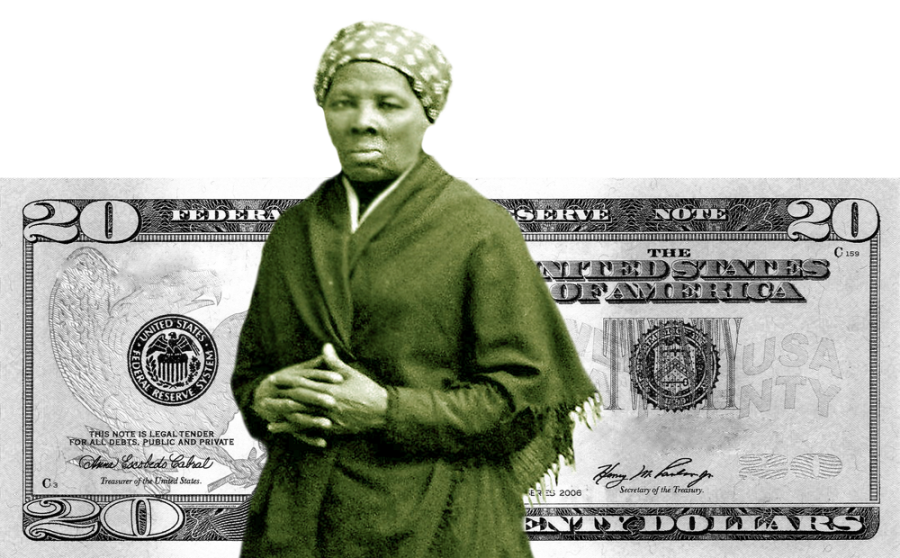Money makeover: The new face of $20 is female
April 28, 2016
The bills in your wallet will soon be receiving a makeover more symbolic than a new watermark or color-changing ink. For the first time in more than 100 years, a woman will be featured on a U.S. bill.
On April 20, Treasury Secretary Jacob J. Lew announced in a press release that Harriet Tubman, famous former slave-turned-abolitionist, will take a front seat on the $20 bill, bumping Andrew Jackson, the 7th president of the United States and commandant behind the Indian Removal Act of 1830, to the back.
A public outcry began a few years ago, led by several women’s organizations according to the office of the Treasurer. The outcry eventually led to several congressmen proposing the change, which eventually passed with a majority vote.
According to Lew, several other women and people of color are being considered for other forms of currency, which was spurred on by a huge backlash from social media. Lew also acknowledged that his office took into consideration many of the opinions voiced online and in surveys with who should replace Jackson with, eventually selecting Tubman.
The conversation is not a new one, and some oppose the idea of Tubman appearing on the bill. Writer Feminista Jones presented a controversial stance in an essay last year that went viral, stating that there’s no place for women, especially women of color, on American currency.
“Tubman was an abolitionist and an integral part of the Underground Railroad, so ahead of her time and defiantly resisted compromising her agency,” said CSUEB Professor of Sociology Vibha Puri, who specializes in gender and ethnic studies. “Andrew Jackson was a former slave owner who became rich on the reproductive and physical labor of Black women in particular. The irony is, $20 is what Tubman received as pension. Significantly, some Black scholars resist her image on currency which was, historically generated by exploiting slaves.”
The Bureau of Engraving and Printing will be in charge of creating the image of Tubman. It is still unclear which image will be on the bill, but the two most common options are photographs traced back to 1885 by H. Seymour Squyer, one full body with a head wrap and the other a close up without her hair covered, according to the Treasurer’s office.
The final concept designs will be revealed in 2020 in commemoration of the 100th year anniversary of the 19th Amendment, which granted women the right to vote in 1920.
“Harriet Tubman’s personal courage and struggle towards a national and ethnic integration makes her a worthy candidate for the honor,”said Puri. “Albeit an honor, bestowed belatedly, and not bereft of political significance for vested interests.”
Last June, Lew announced that the $10 bill, due for a security upgrade, would involve a redesign that involved placing a woman on the note and invited people to share their suggestions for who it should be.
Public opinion led to the decision to leave Hamilton on the $10 and relocate Tubman to the $20, according to the press release. Lew said thousands of participants voiced their support of replacing Jackson with Tubman.
Harriet Tubman, born a slave in Maryland in the early 1800s, is remembered for escorting hundreds of slaves for over a decade through the Underground Railroad, a network of a series of secret routes where abolitionists would harbor slave fugitives on their journey to freedom.
Other recommendations released by the U.S. Department of Engraving and Printing ranged from Pocahontas, daughter of Native American Chief Powhatan, to Margaret Sanger, a birth control pioneer and women’s rights activist.
The last time a woman was featured as the face of a bill was in 1891, when Martha Washington appeared on the dollar silver certificate. Pocahontas made a brief appearance in a group image on the back of the $20 in the 1800s, and dollar coins in the 1900s and early 2000s briefly featured the Native American guide Sacagawea and suffragette Susan B. Anthony.
“I believe it signifies a belated acknowledgement that the nation has historically taken Black labor for granted,” said Puri. “But is the intention backed by practical reforms or is it merely an act to assuage guilt and/or pacify an angry electorate?”
The upgrade extends beyond the $20; the Bureau of Engraving and Printing will also issue a redesign to the $10 and $5 notes.
The back of the $10 will depict the suffragette march at the treasury building in 1913. Lucretia Mott, Sojourner Truth, Susan B. Anthony, Elizabeth Cady Stanton and Alice Paul will be featured, according to Lew. The back of the $5 will honor historical civil rights activists Martin Luther King Jr. and Marian Anderson at the Lincoln Memorial.
Due to security demands related to counterfeiting, the $10 will undergo the redesign first and the $5 and $20 will follow shortly after.
















